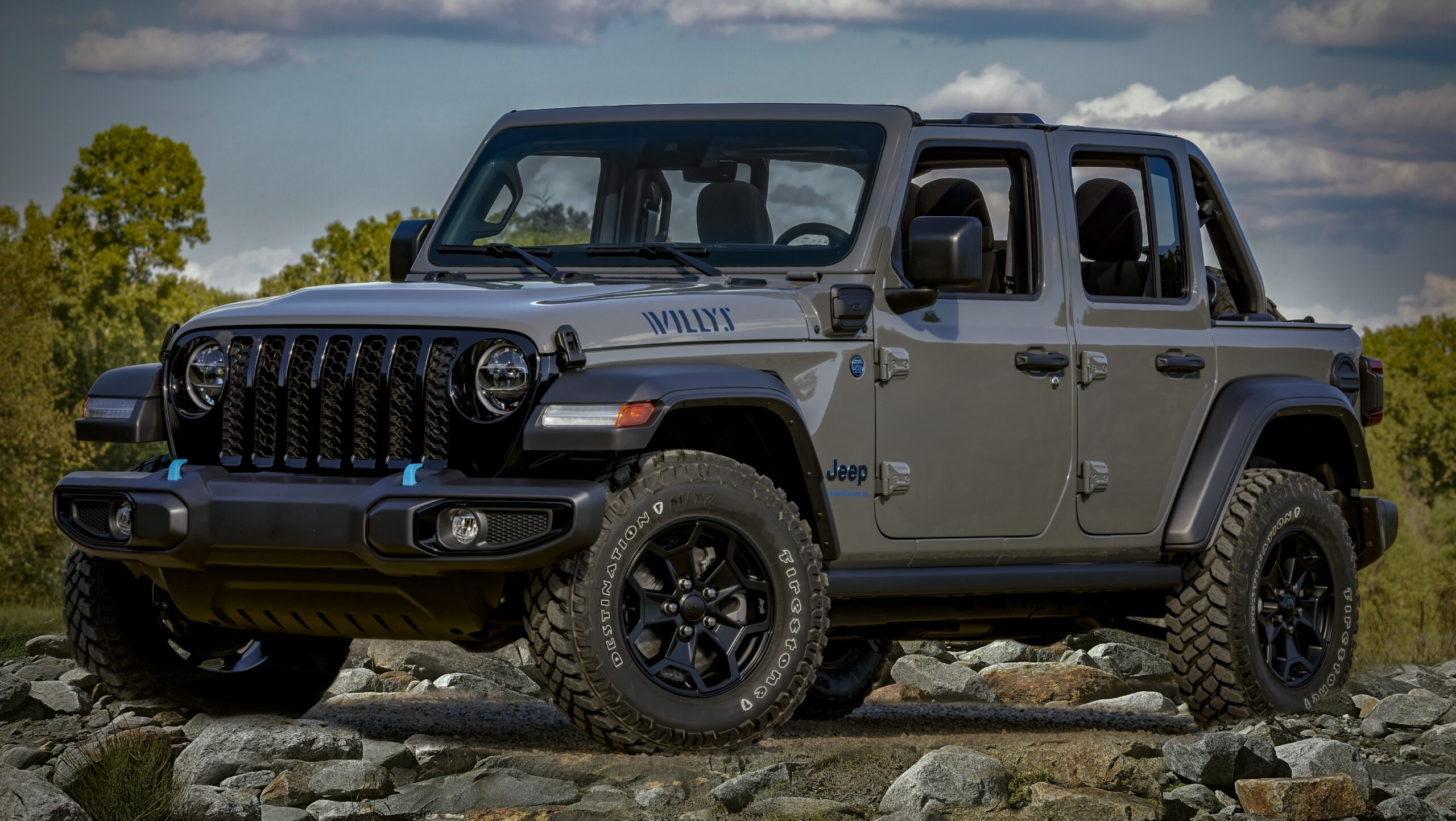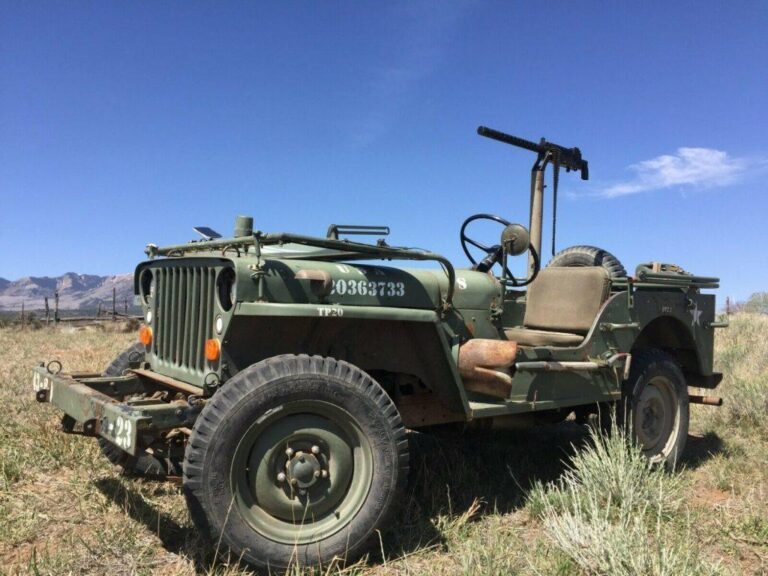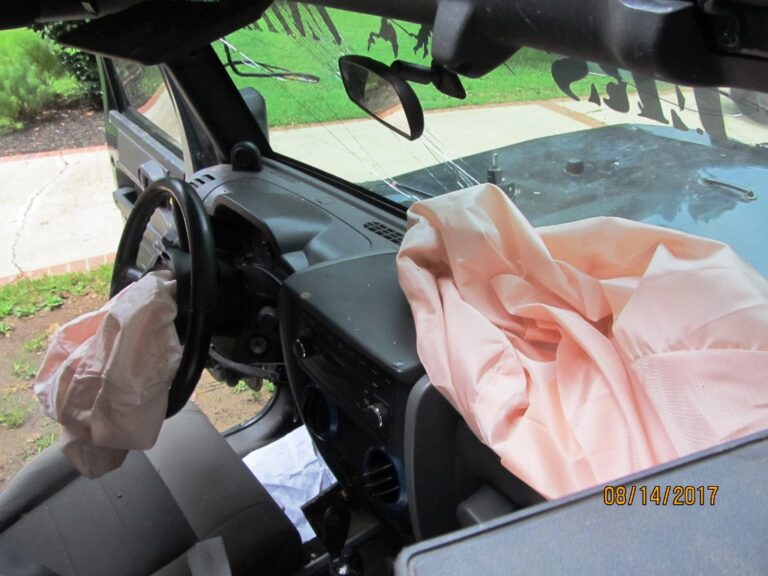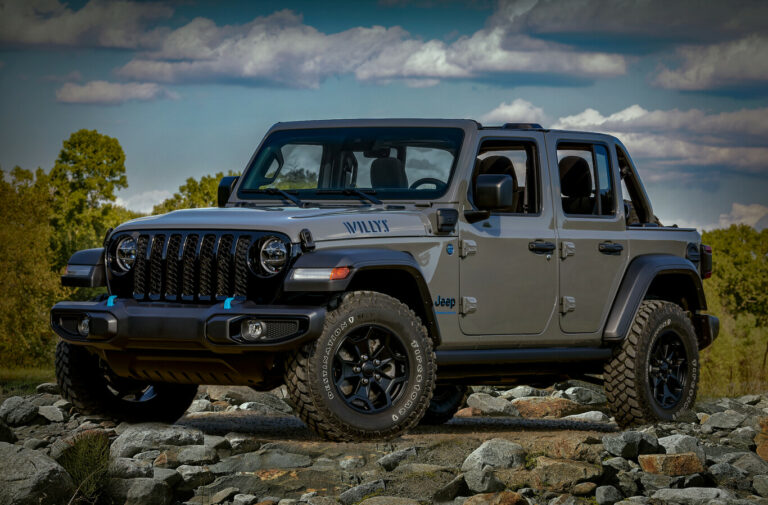Jeep Flat Top For Sale: Your Comprehensive Guide to Owning a Piece of Off-Road History
Jeep Flat Top For Sale: Your Comprehensive Guide to Owning a Piece of Off-Road History jeeps.truckstrend.com
The rumble of a vintage engine, the unmistakable silhouette against a sunset, and the promise of open-air adventure – for many enthusiasts, the "Jeep Flat Top" embodies the quintessential spirit of off-roading. More than just a vehicle, it’s a living legend, a tangible link to the post-war era of utility and rugged individualism. If you’re on the hunt for a piece of automotive history that’s as capable as it is iconic, then exploring "Jeep Flat Top for sale" listings is your first step into a vibrant world of classic vehicle ownership.
This comprehensive guide aims to equip you with all the knowledge you need to navigate the exciting journey of finding, evaluating, and ultimately owning a Jeep Flat Top. We’ll delve into what defines these unique vehicles, where to find them, what to look for, and the practicalities of bringing one home.
Jeep Flat Top For Sale: Your Comprehensive Guide to Owning a Piece of Off-Road History
Understanding the "Flat Top" Legacy
The term "Jeep Flat Top" isn’t an official model designation but rather an affectionate, descriptive moniker used by enthusiasts to refer primarily to the early civilian Jeep models: the Willys CJ-2A, CJ-3A, and their military counterpart, the M38. These vehicles are characterized by their distinctively flat, horizontal front fenders that sit level with the hood, giving them a purposeful, no-nonsense profile. Unlike later Jeeps that adopted more rounded, integrated fender designs, the Flat Tops boast an almost industrial aesthetic that harks back to their utilitarian roots.
Born from the legendary WWII Willys MB and Ford GPW military Jeeps, the CJ (Civilian Jeep) series was designed to bring the wartime heroics and rugged capability to farms, ranches, and adventurous individuals.
- Willys CJ-2A (1945-1949): Often called the "Agri-Jeep," it was the first mass-produced civilian Jeep. It retained much of the MB’s DNA but added a tailgate, power take-off (PTO) options, and civilian lighting. Its robust "Go-Devil" L-head engine and simple mechanics made it an instant hit.
- Willys CJ-3A (1949-1953): An evolution of the 2A, the 3A introduced a one-piece windshield that allowed for better visibility and a slightly more refined (though still very basic) interior. It also retained the reliable Go-Devil engine.
- Willys M38 (1950-1952): The military version of the CJ-3A, the M38 was built to exacting military specifications. Key differences include a 24-volt electrical system, a waterproof ignition, and heavy-duty components designed for harsh combat environments. These are highly sought after by collectors for their historical accuracy and ruggedness.
- Early CJ-5 (1955-c. mid-1960s): While the true "Flat Top" refers to the earlier CJ-2A, CJ-3A, and M38, some early CJ-5 models, particularly those produced by Willys and Kaiser, still maintained a relatively flat fender line before the later, more rounded designs became prominent. These are sometimes grouped by enthusiasts looking for a similar vintage aesthetic, though they are distinct from the earlier models.
![]()
The importance of these Flat Tops lies not only in their historical significance but also in their enduring appeal. They represent a simpler era of motoring, offering a direct, unfiltered driving experience. For off-roaders, their compact size, excellent approach and departure angles, and robust four-wheel-drive systems make them surprisingly capable even by modern standards. For collectors, they are cherished artifacts, embodying American ingenuity and resilience.
Where to Find Jeep Flat Tops For Sale
The hunt for a classic Flat Top Jeep can be an adventure in itself. Unlike modern vehicles, you won’t find these on a dealership lot (unless it’s a specialty classic car dealer). Here are the primary avenues to explore:
- Online Marketplaces & Auction Sites:
- eBay Motors: A vast marketplace where you can find anything from rusty projects to fully restored examples. Be prepared for varying levels of detail in listings.
- Craigslist/Facebook Marketplace: Excellent for local finds, often from private sellers. Prices can be more negotiable, but in-person inspection is crucial. Beware of scams.
- Dedicated Classic Car Sites: Hemmings.com, ClassicCars.com, Bring a Trailer (BaT). These sites cater specifically to classic vehicles, often providing detailed descriptions, extensive photo galleries, and sometimes even video tours. BaT, in particular, is known for high-quality, well-documented auctions.
- Jeep-Specific Forums & Classifieds: Websites like G503.com (for military Jeeps), EarlyCJ5.com, and WillysTech.com often have classified sections where passionate owners buy and sell. These communities can also offer invaluable advice.

- Specialty Classic Car Dealerships & Restorers: Some dealerships specialize in vintage 4x4s, including Flat Top Jeeps. While prices might be higher, you often benefit from pre-inspected vehicles, potential warranties, and access to expertise. Restoration shops might also have completed projects for sale or know of vehicles available.
- Auctions (Live & Online): Major auction houses (e.g., Mecum, Barrett-Jackson) occasionally feature high-end, fully restored Flat Tops. Local classic car auctions can also be a source for more accessible projects or drivers.
- Word of Mouth & Car Shows: Networking within the classic car and Jeep communities can yield leads. Attending local car shows, particularly those focused on vintage 4x4s, is a great way to see vehicles in person and connect with sellers.
Types of "Flat Top" Jeeps You Might Encounter
When searching for a "Jeep Flat Top for sale," you’ll encounter a range of conditions and specific models. Understanding these distinctions is key to setting your expectations and budget:
- The Willys CJ-2A (1945-1949): The quintessential "Flat Top." Expect the original "Go-Devil" L-head four-cylinder engine, a 6-volt electrical system, and the iconic "Willys" stamped tailgate. These are often the most affordable of the fully vintage Flat Tops, especially in project condition.
- The Willys CJ-3A (1949-1953): A refined 2A with the single-piece windshield. Mechanics are largely similar to the 2A, making parts interchangeability relatively good. They tend to command slightly higher prices than 2As in comparable condition due to their slightly improved design.
- The Willys M38 (1950-1952): The military variant. Look for the distinct military features: blackout lights, a pioneer tool kit on the passenger side, a deep-water fording system, and the 24-volt electrical system. M38s, especially those with documented military history, are highly desirable and often fetch premium prices.
- Early CJ-5 (1955-mid-1960s): While not a "true" Flat Top in the same vein as the 2A/3A/M38, early CJ-5s (particularly those with the F-head "Hurricane" engine) still share a relatively flat fender line and a similar compact, utilitarian aesthetic. They offer a slightly more modern driving experience than their predecessors and are a good option for those seeking a vintage look with a bit more power and convenience.
- Condition Categories:
- Project Vehicle: Requires extensive work – rust repair, engine rebuild, new wiring, etc. These are the most affordable but demand significant time, skill, and financial investment.
- Driver Quality: Runs and drives, safe for the road, but shows wear and tear. May have minor issues, non-original parts, or cosmetic flaws. Good for those who want to enjoy it immediately and perhaps restore it gradually.
- Restored/Show Quality: Near-perfect condition, often with original or period-correct parts. These command the highest prices and are often trailered to shows rather than driven off-road.
- Survivor/Original: A rare find – a vehicle that has been well-preserved over the decades with minimal restoration. These are highly prized for their originality and patina.
What to Look For When Buying a Jeep Flat Top
Purchasing a vintage vehicle, especially one as old as a Flat Top Jeep, requires a keen eye and a thorough inspection. Bring a knowledgeable friend or a mechanic specializing in classic vehicles if possible.
- Rust (The Silent Killer): This is the number one enemy.
- Frame: Inspect the entire frame for cracks, bends, or severe rust-through, especially around suspension mounting points, spring hangers, and cross members.
- Body Tub: Check floorboards (driver and passenger sides), rear cargo area, battery box, and under the seats. Pay attention to the areas where the body meets the frame.
- Fenders & Grille: Look for rust around headlight buckets, fender wells, and the bottom edges of the grille.
- Hat Channels: These are channels under the floorboards that connect the body to the frame; they are notorious rust traps.
- Engine & Drivetrain:
- Engine: Listen for unusual noises (knocks, rattles, excessive smoke from the exhaust). Check for oil leaks around the engine block, oil pan, and valve cover. Verify the engine type (Go-Devil L-head, Hurricane F-head for early CJ-5s) matches the model.
- Transmission & Transfer Case: Check for leaks. Test all gears, including reverse, and engage 4WD high and low range. Listen for grinding or difficulty shifting.
- Axles: Check for leaks at the differential covers and axle seals. Listen for howling or clunking sounds during a test drive.
- Electrical System:
- Original 6V vs. 12V Conversion: Many Flat Tops have been converted to 12V for easier starting and modern accessory compatibility. Ensure the conversion was done professionally. If it’s still 6V, verify all components (battery, generator, starter, lights) are functioning correctly.
- Wiring: Look for frayed wires, bare spots, or amateurish splices. This can be a fire hazard.
- Lights & Gauges: Test all lights, turn signals, and dashboard gauges.
- Brakes, Suspension & Steering:
- Brakes: Check for spongy pedal feel, pulling to one side, or excessive noise. Ensure the emergency brake works.
- Suspension: Look for sagging leaf springs, worn-out shocks, or broken U-bolts.
- Steering: Check for excessive play in the steering wheel. Inspect steering linkage components for wear.
- Documentation & VIN:
- Ensure the VIN on the title matches the VIN on the vehicle (usually on the frame rail near the front passenger wheel, or on a dash plate for later models). Check for a clear title.
- Service Records: Any history of maintenance or restoration is a bonus.
- Modifications: Assess modifications. Are they desirable? Are they well-done? Some modifications (like a 12V conversion or power steering) might enhance usability, while others might detract from originality or indicate poor workmanship.
Pricing Your "Flat Top" Dream
The price of a Jeep Flat Top for sale can vary wildly, influenced by condition, originality, specific model, and market demand. Here’s a general guide:
Table: Estimated Price Ranges for Jeep Flat Top Models
| Model | Condition: Project (Needs Major Work) | Condition: Driver (Runs, Drives, Safe) | Condition: Restored/Show Quality (Excellent) |
|---|---|---|---|
| Willys CJ-2A | $3,000 – $8,000 | $8,000 – $18,000 | $18,000 – $35,000+ |
| Willys CJ-3A | $4,000 – $9,000 | $9,000 – $20,000 | $20,000 – $40,000+ |
| Willys M38 | $5,000 – $12,000 | $12,000 – $25,000 | $25,000 – $50,000+ |
| Early CJ-5 | $3,000 – $7,000 | $7,000 – $16,000 | $16,000 – $30,000+ |
- Note: These prices are estimates and can fluctuate based on location, specific features (e.g., rare PTO units, original military equipment for M38s), documented history, and market trends. Highly rare or exceptionally restored examples can exceed these ranges. Always factor in potential shipping costs if buying out of state.
Tips for a Successful Purchase
- Do Your Homework: Before even looking at a Jeep, research the specific model you’re interested in. Understand its quirks, common issues, and distinguishing features.
- Inspect Thoroughly (or Hire an Expert): Never buy sight unseen unless through a reputable auction house with detailed inspections. If you’re not mechanically inclined, pay for a pre-purchase inspection by a mechanic familiar with vintage vehicles.
- Negotiate Wisely: Don’t be afraid to negotiate, especially if you’ve identified issues during inspection. Be prepared to walk away if the deal doesn’t feel right.
- Budget Beyond the Purchase Price: Remember to factor in costs for:
- Immediate Maintenance: Even a "driver" will likely need fluids changed, new tires, or minor repairs.
- Registration & Insurance: Classic car insurance is often affordable but factor it in.
- Tools & Parts: You’ll likely want to do some work yourself, so budget for basic tools and common replacement parts.
- Restoration Costs (if applicable): Be realistic about the time and money a project vehicle will demand. Rust repair alone can quickly become very expensive.
- Join the Community: Connect with other Flat Top owners online and locally. They are an invaluable resource for advice, parts sourcing, and camaraderie.
Challenges and Solutions
Owning a vintage Flat Top Jeep comes with its unique set of challenges, but thankfully, most have well-established solutions:
- Challenge: Finding Parts: Original New Old Stock (NOS) parts are rare and expensive.
- Solution: A robust aftermarket exists for many common replacement parts (body panels, mechanical components). Specialized vendors (e.g., Walck’s 4×4, Kaiser Willys) offer a vast selection of reproduction parts. Online forums are excellent for finding used parts or leads.
- Challenge: Mechanics Familiar with Old Jeeps: Many modern mechanics are unfamiliar with carbureted engines, drum brakes, and 6-volt systems.
- Solution: Seek out older, independent garages or specialty classic car shops. Learning basic mechanics yourself is highly recommended and rewarding.
- Challenge: Rust Repair: Extensive rust can be a daunting and costly repair.
- Solution: For severe rust, professional body shops specializing in restoration are best. For minor rust, DIY solutions exist. Prevention (keeping it dry, rust-proofing) is key post-purchase.
- Challenge: Daily Driving Suitability: Flat Tops lack modern safety features (airbags, crumple zones), are slow, and lack comforts like AC or power steering.
- Solution: A Flat Top is best enjoyed as a weekend warrior or fair-weather cruiser. For longer trips or highway driving, consider modifications like a 12V conversion, seatbelt upgrades, or a more modern engine/transmission swap (though this impacts originality). Embrace the vintage driving experience.
Conclusion
The appeal of a "Jeep Flat Top for sale" goes far beyond mere transportation. It’s an invitation to own a piece of history, to connect with a simpler time, and to experience the raw, unadulterated joy of open-air motoring and true off-road capability. Whether you envision a meticulous restoration, a reliable weekend driver, or a rugged trail rig, the Willys CJ-2A, CJ-3A, M38, and even early CJ-5s offer a unique and rewarding ownership experience.
While the journey to acquire and maintain a Flat Top requires patience, research, and a realistic budget, the reward is immeasurable. These Jeeps aren’t just vehicles; they are enduring symbols of freedom, adventure, and the rugged American spirit. They spark conversations, turn heads, and create memories that will last a lifetime. So, embark on your search with enthusiasm, knowledge, and a willingness to embrace the quirks of these automotive legends – your Flat Top adventure awaits!
Frequently Asked Questions (FAQ) about Jeep Flat Tops For Sale
Q1: What exactly makes a Jeep a "Flat Top"?
A1: The term "Flat Top" refers to early civilian Jeeps, primarily the Willys CJ-2A (1945-1949), CJ-3A (1949-1953), and their military counterpart, the M38 (1950-1952). They are distinguished by their flat, horizontal front fenders that sit level with the hood, giving them a distinctively utilitarian and rugged profile, unlike later Jeeps with more rounded fenders.
Q2: Are parts hard to find for Flat Top Jeeps?
A2: While NOS (New Old Stock) original parts can be rare and expensive, there’s a robust aftermarket for reproduction parts. Specialized vendors (e.g., Walck’s 4×4, Kaiser Willys) offer a wide range of mechanical components, body panels, and electrical parts. Owner forums and communities are also excellent resources for finding used parts or advice.
Q3: Can I daily drive a Flat Top Jeep?
A3: While technically possible, it’s generally not recommended for daily commuting, especially on modern highways. Flat Tops lack modern safety features (airbags, crumple zones), are slow, have basic braking systems, and offer minimal comfort (no AC, manual steering). They are best suited as weekend cruisers, trail vehicles, or for short, local trips where their charm and character can be fully appreciated.
Q4: What’s the main difference between a CJ-2A and a CJ-3A?
A4: The primary visible difference is the windshield. The CJ-2A has a split, two-piece windshield, while the CJ-3A introduced a larger, one-piece windshield for improved visibility. Mechanically, they are very similar, both utilizing the reliable "Go-Devil" L-head four-cylinder engine.
Q5: Is a Flat Top Jeep a good investment?
A5: For most, a Flat Top Jeep is a passion purchase rather than a pure financial investment. While well-restored or original examples can appreciate over time, the costs of acquisition, restoration, and maintenance often outweigh potential resale profits. However, they hold their value remarkably well and offer immense enjoyment, which is its own form of return on investment.
Q6: What kind of fuel economy can I expect from a Flat Top Jeep?
A6: Don’t expect modern fuel efficiency. Flat Top Jeeps, especially with their original engines, typically get around 10-15 miles per gallon (MPG), depending on driving conditions, engine tuning, and vehicle modifications.
Q7: Are Flat Top Jeeps safe to drive by modern standards?
A7: No, they are not. They predate most modern automotive safety standards. They lack airbags, ABS, crumple zones, and often have basic lap belts or no seatbelts at all. Driving one requires heightened awareness, defensive driving, and a full understanding of its limitations. Many owners choose to upgrade to three-point seatbelts, better lighting, and improved brakes for enhanced safety.





